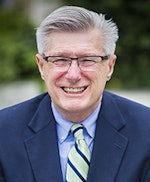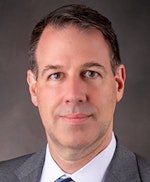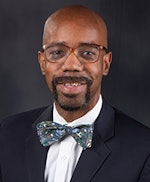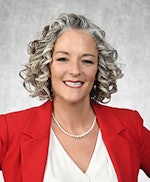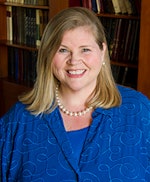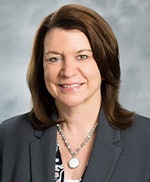There’s No “I” in MPPWSA: It Takes Teamwork to Do This Work
Believe it or not, our team gets this question all the time: who’s responsible for the institution "winnin" the MPPWSA award? This question has been raised by governing board members, university presidents, provosts, and, in some cases, from senior student affairs officers themselves. Usually, the question seeks to identify the person or the office that deserves credit for earning the national recognition. After managing this project for a full decade, here’s what we have learned: “There’s no ‘I’ in MPPWSA” and there’s good reason for it. Earning this national recognition requires true teamwork and winning institutions make it a campus-wide priority.
It may sound cliché, but achieving diversity is everyone’s job. No single person or unit can do it all, nor should they. It takes a village — well, a team — to promote diversity, achieve equity, foster inclusion, pursue justice, and boost belonging in higher education workplaces, including student affairs. These terms must be more than buzzwords and deeply infuse day-to-day operations, campus policies, HR practices, and business intelligence. Winning institutions know the difference between them and use that understanding to bring talented people in as staff and leaders, to remove systemic barriers that shut some people out, and to ensure that all staff members feel heard, seen, and visible as reflected in the institution’s staff profile, equitable pay structure, core values, and DEI practices, to give a few examples.
There are many versions of this in the public domain, but we present this as a basic guide for readers. Diversity asks: Who’s present? Equity asks: Who’s (still) attempting to enter the room but can’t? What obstacles exist, seen and unseen? Inclusion asks: Are all people’s opinions heard, valued, and understood? Belonging asks: Does everyone in the room feel respected and free to be themselves, just as they are? Justice asks: How, or why, are our systems harming or limiting people? How do we fix them? And, all of these come together in a way that leads to action to achieve positive results, while paying attention to people’s experiences along the way.
Promising Places create a culture of evidence-based decisionmaking that leads to implementation, experimentation, and even revision of promising practices, policies, and programs like those mentioned in this year’s report. It’s not that they do one thing well, but they have developed a constellation of supportive policies, equity-minded practices, and cutting-edge DEI practices that provide employees, particularly those in student affairs, with a positive work environment, equitable pay, opportunities for advancement, and meaningful work that contributes to the institution’s bottom line and their personal/professional goals.
On many campuses, promising practices, programs, and services are "housed" across divisions. They’re in human resources and talent management. Diversity and inclusion. Academic and student affairs. Athletics and intramural sports, to name a few. So, the answer to the question "who’s responsible" is simple: everyone! When the institution wins, everyone wins.
Again, congratulations to this year’s highly selective set of Most Promising Places to Work in Student Affairs!
ABOUT THE STUDY
This study was first proposed by Ralph Newell at Diverse: Issues In Higher Education as a possible partnership with the American College Personnel Association (ACPA) in 2011. The ACPA Governing Board motioned for then-director of research and scholarship Dr. Terrell Strayhorn to explore the merit and extent of the project. With input from a volunteer advisory board, the project was recommended to the governing board and approved.
ACPA and Diverse: Issues In Higher Education commissioned Strayhorn to serve as the project’s principal investigator. In the role, Strayhorn developed the MPPWSA survey in consultation with experts on the project’s advisory board. The original survey was pilot tested with a small sample of non-ACPA member institutions; feedback from the pilot test helped to clarify survey items, correct logic sequencing, and determine the utility of our scoring algorithm.
The purpose of this commissioned study was to examine the extent to which diversity and inclusion permeates aspects of various divisions of student affairs (or equivalent) at participating ACPA-member institutions across the globe including administrative structures, commitments, work environments, and staffing practices.
ABOUT THE SURVEY
The MPPWSA survey consists of approximately 60 items, organized into 10 major sections. For example, one section elicits contact information for the survey respondent and identifying information about their respective institution (e.g., control, minority-serving institution [MSI] status). Another section includes several items to assess the structural diversity of the institution and student affairs department in terms of gender, race, sexual orientation, and disability status. There are several sections that measure the availability and extent of support services provided to student affairs staff on campus, such as professional development.
The survey was authored by Terrell Strayhorn, with input from experts on the project advisory board, and is not available in the public domain. Now part of the larger ‘Promising Places to Work’ project, the survey has been administered by Strayhorn and his teams at various centers and Do Good Work Educational Consulting LLC. All survey rights belong to the author. All analyses presented in this edition were conducted by Terrell Strayhorn and Royel Johnson.
ENGAGE US ON SOCIAL MEDIA
We invite readers to share with us how they’re using this year’s report of Most Promising Places to Work in Student Affairs (MPPWSA). Share with us on Twitter, Facebook, or Instagram using #MPPWSA23 and tag @DiverseIssues and @ACPA.
Past editions of this annual report have been used by:
Accrediting agenciesEmployersHuman resource managersJob SeekersProfessional associationsPROJECT TEAM BIOGRAPHIES
Dr. Terrell Strayhorn is professor of higher education at Illinois State University, where he also holds appointments in women’s, gender & sexuality studies. He is director of the Center for the Study of HBCUs at Virginia Union University, where he also serves as visiting scholar in the Evelyn Reid Syphax School of Education and Department of Psychology. Additionally, he is president and CEO of Do Good Work Educational Consulting Group, a research firm that partners with leading colleges and schools to improve policy and practice as a way of ensuring all students’ success. Author of 12 books, more than 200 journal articles, chapters, and reports, Strayhorn is an internationally known student success expert, equity researcher, and public speaker. Diverse: Issues in Higher Education named Strayhorn an Emerging Scholar, and he has received ACPA’s Emerging Scholar, Annuit Coeptis, and Diamond Honoree Awards. @tlstrayhorn
Dr. Royel Johnson is an associate professor of higher education at the University of Southern California. In addition, he serves as the director of student engagement at the USC Race and Equity Center and faculty in the Pullias Center for Higher Education. Johnson is a nationally recognized expert on issues of educational access, racial equity, and student success. His work has an unapologetic focus on Black and institutionally marginalized populations like those impacted by the criminal punishment, child welfare, and inequitable educational systems. He has published over 60 academic publications, including two books: Racial Equity on College Campuses: Connecting Research and Practice and Enacting Student Success: Critical and Alternative Perspectives for Practice. In 2020, he received ACPA’s Emerging Scholar Award. @royeljohnson
This project also benefitted from the contributions of many others who have helped contact administrators, write institutional profiles, and elicit quotations from personnel at featured institutions. These include (in alphabetical order): Stanley Gates, Shay Merritte, Danny Ndungu, Tiffany Steele, Catherine Wang, Anton Smith, Gabriel Kim, and Daniel Thomas. The original advisory board for this project included Drs. Tracey Cameron, Stan Carpenter, Kristen Renn, Joan Hirt, and Sue Saunders.
PROMISING PRACTICES
Promising practices are specific, actionable insights that were gleaned from survey data and speaking with teams of student affairs practitioners from the most promising places to work. These Promising Practices are not necessarily “best practices” per se as what works well on one campus may not achieve the same results on another. Instead, we present them as promising practices that, according to annual and trend lines for MPPWSA, seem to consistently produce desirable outcomes in practice.
DEMONSTRATED COMMITMENT TO INCLUSIVE EXCELLENCE
Beyond the development of taskforces and strategic plans for achieving diversity or inclusive excellence within their division, senior leaders at this year’s Most Promising Places to Work in Student Affairs (MPPSA) maintained very clear commitments to the translation and implementation of such efforts within their day-to-day operations. For example, one vice president commissioned a committee to develop a comprehensive guide for the recruitment and retention of diverse staff. Grounded in empirical research-related multiculturalism in education and social justice, this guide offers hiring committees and supervisors actionable items to follow to achieve the diversity they envision for their unit. As another example, staff are encouraged to discuss hiring goals with human resources (HR) recruiters and to request full view of candidates without pre-screening. This strategy helps ensure that all candidates are carefully considered.
Ensuring inclusive excellence in student affairs is hard work. It requires that we move beyond rhetoric — the mere acknowledgment that diversity is important — to action. Leaders at this year’s MPPWSA institutions have taken bold new steps for sustained transformational change within their divisions. We encourage SSAOs across the country to also engage in the necessary, and sometimes difficult, decision-making required for recruiting and retaining diverse staff within their divisions. Of course, the progress of some MPPWSA institutions may eclipse the current status of others. Indeed, each year we welcome newcomers to the list of MPPWSA institutions — hats off to all those who have been named for the first time in 2023! We also acknowledge that some former MPPWSA institutions are not in this year’s lineup, which has been true every year of the project. Generally, such changes in the lineup can be attributed to (1) significant improvements and sustained focused efforts on the part of prior MPPWSAs, (2) entry of newcomers to the annual competition who outpace others on key metrics, and (3) changes or declines in supports and services of past recipients. Interestingly, our research team has also observed that movement on- and off-the-list is correlated with leadership turnover, especially in vital student services areas. Thus, we encourage readers of this special report and senior-most leaders of MPPWSA institutions to consider these recommendations when fashioning productive work environments, promoting inclusive excellence, and managing institutional change caused by leadership transitions (e.g., promotion, separation). Doing the same thing well consistently over time has greater impact than doing something great once.
ENCOURAGE WORK ACROSS SILOS
In addition to excelling in their assigned roles or positions, staff at many of the MPPWSA were incentivized to work on projects outside of their normal divisions and functions. For an example of how allowing work across silos contributes to a promising place to work, look at this year’s featured institutions in terms of dining services, counseling services, and financial aid, to name a few. One reason for the success of these campus services is a result of the cross-pollination that occurred when they were encouraged to share ideas across units on how to best serve students. Mixing of creative ideas, effective strategies, and deeper understandings of campus needs led to innovations such as campus-sponsored food pantries, university-sanctioned clothing closets, emergency aid grants, veteran services, and reemployment support for staff.
FOSTERING A SENSE OF BELONGING
Enabling staff to work across invisible “functional walls” that separate teams and divisions also helped many of this year’s MPPWSA institutions to provide workplace environments where faculty and staff feel like they belong and matter.
It is important to note that the mere provision of professional supports and services is unlikely to produce robust outcomes like workplace belonging. Instead, it is when staff support and services are intentionally designed to address the basic and specific needs of personnel and remove structural inequities that belonging, productivity, and success come to fruition. For instance, several of this year’s MPPWSA institutions offer various forms of professional leave (e.g., caregiving, educational) to staff to accommodate their academic aspirations and family needs. Other institutions offer stress reduction programs (e.g., virtual yoga), flexible workhours (even pre-pandemic), merit pay or bonuses, and childcare services to demonstrate an institutional commitment to work-life balance, family-friendliness, and holistic development.


